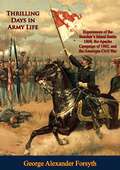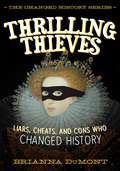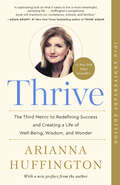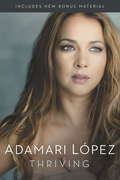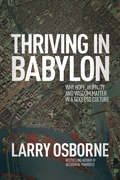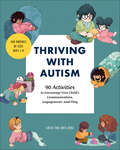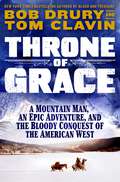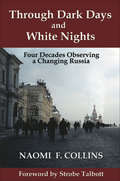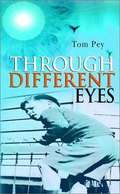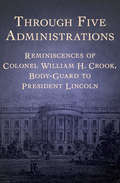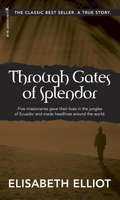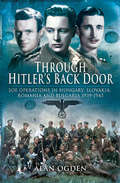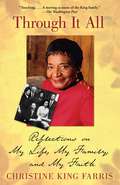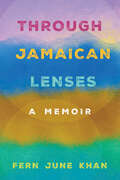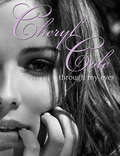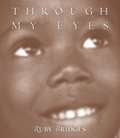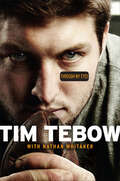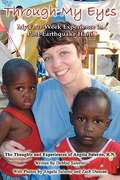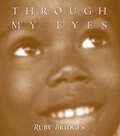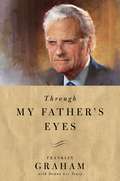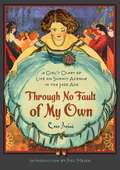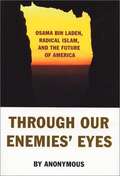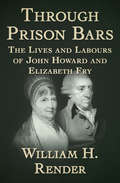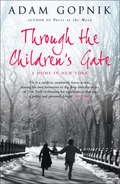- Table View
- List View
Thrilling Days in Army Life: Experiences of the Beecher's Island Battle 1868, the Apache Campaign of 1882, and the American Civil War
by George Alexander Forsyth“A highly regarded memoir of the Indian and Civil Wars.The author of this book, George A. (Sandy) Forsyth was a career soldier who served with distinction in the American Civil War and subsequently upon the western frontier against the Plains Indian tribes as they fought a losing battle to stem the inexorable advance of 'Manifest Destiny'—essentially 'the survival of the fittest'—'the law' as Forsyth writes, 'that has obtained since the dawn of creation.' Forsyth's career was varied and full of incident, though in his biography he has elected to concentrate on just four outstanding episodes in which he took part. The first, and certainly the one for which has remained famous to this day concerns the Battle of Beecher's Island. In 1868 in command of just 50 'scouts' Forsyth pursued a thousand Indian warriors of the Northern Cheyenne and other tribes under the war chief, Roman Nose, and found himself besieged on a small island in a creek of the Republican River. This incredible story of endurance has become one of the iconic episodes of the Plains Indian Wars. Here Forsyth tells his experiences in his own words before recounting a lesser known incident from his time on the Mexican border in conflict with and pursuit of Chiricahua Apaches. The final two accounts concern Forsyth's experiences as an aide to Sheridan during the Civil War, first during the Shenandoah campaign and finally at Lee's surrender at Appomattox Court House after the last shots of the war were fired. Forsyth intends to grip his reader from first page to last by the exclusion of the routine of drudgery of military life and by focusing on its moments of high action. He succeeds and has created a highly entertaining account of military adventure of the United States Army of the nineteenth century which will satisfy every reader.”-Print ed.
Thrilling Thieves: Liars, Cheats, and Cons Who Changed History (Changed History Series)
by Brianna DuMontCaution: don’t look for the good guys in here.What do Mother Theresa, Honest Abe, and Mahatma Gandhi have in common? They’re all too good for this book, that’s what.Sure, you’ll find some familiar faces like Queen Elizabeth I and Thomas Edison in here, but you’ll learn that behind their angelic smiles were cunning con artists who stole their way to gold and greatness. Follow the trail of twelve troublemakers to learn what really made the Mona Lisa the most iconic painting in the world, meet the most powerful pirate from history (it’s probably not who you’re expecting), and watch empires rise and fall with the theft of a simple tea plant. Turns out our world owes a lot to those who dabble on the dark side.If you’re not scared of crooks and criminals, take a peek at this new side of history . . .
Thrive: The Third Metric to Redefining Success and Creating a Life of Well-Being, Wisdom, and Wonder
by Arianna HuffingtonIn Thrive, Arianna Huffington makes an impassioned and compelling case for the need to redefine what it means to be successful in today's world. Arianna Huffington's personal wake-up call came in the form of a broken cheekbone and a nasty gash over her eye--the result of a fall brought on by exhaustion and lack of sleep. As the cofounder and editor-in-chief of the Huffington Post Media Group--one of the fastest growing media companies in the world--celebrated as one of the world's most influential women, and gracing the covers of magazines, she was, by any traditional measure, extraordinarily successful. Yet as she found herself going from brain MRI to CAT scan to echocardiogram, to find out if there was any underlying medical problem beyond exhaustion, she wondered is this really what success feels like? As more and more people are coming to realize, there is far more to living a truly successful life than just earning a bigger salary and capturing a corner office. Our relentless pursuit of the two traditional metrics of success--money and power--has led to an epidemic of burnout and stress-related illnesses, and an erosion in the quality of our relationships, family life, and, ironically, our careers. In being connected to the world 24/7, we're losing our connection to what truly matters. Our current definition of success is, as Thrive shows, literally killing us. We need a new way forward. In a commencement address Arianna gave at Smith College in the spring of 2013, she likened our drive for money and power to two legs of a three-legged stool. They may hold us up temporarily, but sooner or later we're going to topple over. We need a third leg--a third metric for defining success--to truly thrive. That third metric, she writes in Thrive, includes our well-being, our ability to draw on our intuition and inner wisdom, our sense of wonder, and our capacity for compassion and giving. As Arianna points out, our eulogies celebrate our lives very differently from the way society defines success. They don't commemorate our long hours in the office, our promotions, or our sterling PowerPoint presentations as we relentlessly raced to climb up the career ladder. They are not about our resumes--they are about cherished memories, shared adventures, small kindnesses and acts of generosity, lifelong passions, and the things that made us laugh. In this deeply personal book, Arianna talks candidly about her own challenges with managing time and prioritizing the demands of a career and raising two daughters--of juggling business deadlines and family crises, a harried dance that led to her collapse and to her "aha moment." Drawing on the latest groundbreaking research and scientific findings in the fields of psychology, sports, sleep, and physiology that show the profound and transformative effects of meditation, mindfulness, unplugging, and giving, Arianna shows us the way to a revolution in our culture, our thinking, our workplace, and our lives.
Thriving
by Adamari LopezAdamari López, the internationally known actress, had everything--a loving family, a perfect boyfriend, and a leading role on a successful telanovela in Mexico--when three words changed her life forever: you have cancer. Suddenly, in only a few months, the world that she knew collapsed and her life was turned upside-down. <P><P> In Thriving, the normally private López reveals the triumphs and trials of her life, sharing anecdotes of her childhood and her family while describing her journey through breast cancer; the sudden illness of her mother; her wedding, one of the happiest days of her life; and, later, what she considers to be the hardest blow of all: the dissolution of her marriage. However, through it all, her strength and her faith never failed, and her loving and positive spirit, along with her perpetual smile, helped her to discover a new and rewarding start in love and in life.
Thriving in Babylon
by Larry OsborneMeet a man forced to live in a fast changing and godless society. He faced fears about the future, concern for his safety, and the discouragement of world that seemed to be falling apart at warp speed. Sound familiar? His name was Daniel, and with the power of hope, humility, and wisdom, he not only thrived, he changed an empire while he was at it. Though he lived thousands of years ago, he has a much to teach us today. Even in Babylon, God Is in Control In Thriving in Babylon, Larry Osborne explores the "adult" story of Daniel to help us not only survive - but actually thrive in an increasingly godless culture. Here Pastor Osborne looks at: - Why panic and despair are never from God- What true optimism looks like- How humility disarms even our greatest of enemies- Why respect causes even those who will have nothing to do with God to listen- How wisdom can snatch victory out of the jaws of defeat For those who know Jesus and understand the full implications of the cross, the resurrection, and the promises of Jesus, everything changes - not only in us, but also in our world.
Thriving with Autism: 90 Activities to Encourage Your Child's Communications, Engagement, and Play
by Katie CookHelp children with autism strengthen their connections—supportive strategies for ages 1 to 11To guide your efforts to help your child flourish, this book has 90 playful, evidence-based activities. Thriving with Autism provides an easy, effective toolbox to supplement and support the developmental work parents and caregivers are doing with their children. These solutions are designed for kids with autism from ages 1 to 11. The benefits can last a lifetime.From building better conversation abilities to strengthening social skills, Thriving with Autism delivers practical, everyday ways to connect, encourage, and play. Featuring exercises like Acts of Friendliness, The Human Burrito, and Emotional Charades, this comprehensive guide encourages your child with autism to boost their communication, engagement, and self-regulation skills.Thriving with Autism includes:Hands-on activities—Make learning fun with lots of lessons that can help kids across the autism spectrum.Simple strategies—Tackle these easy, research-driven activities one by one at home.Engaging and practical—Find helpful tips and suggestions, as well as full-color illustrations that are sure to inspire and delight you and your child.Now there's a smart, sensible way to help teach kids with autism necessary skills.
Throne of Grace: A Mountain Man, an Epic Adventure, and the Bloody Conquest of the American West
by Bob Drury Tom ClavinThe explosive true saga of the legendary adventurer Jedediah Smith and the Mountain Men who explored the American frontier, written by New York Times bestselling authors of Blood and Treasure Bob Drury and Tom Clavin.It is the early 19th century, and the land recently purchased by President Thomas Jefferson stretches west for thousands of miles. Who inhabits this vast new garden of Eden? What strange beasts and natural formations can be found? Thus was the birth of Manifest Destiny and the resulting bloody battles with Indigenous tribes encountered by white explorers. Also in this volatile mix are the grizzled fur trappers and mountain men, waging war against the Native American tribes whose lands they traverse.This is the setting of Throne of Grace, and the guide to this epic narrative is arguably America’s greatest yet most unsung pathfinder, Jedediah Smith. His explorations into the forested frontiers on both sides of the Rocky Mountains and all the way to the West Coast would become the stuff of legend. Thanks to painstaking research and riveting writing, the story of the making of modern America is told through the eyes of both the ordinary and memorable men and women, settlers and Indigenous, who witnessed it. But it's Smith who drives the narrative with his trailblazing path through the unexplored terrain of the American West.Throne of Grace is a gripping yarn that drops the reader into the center of an underreported era and introduces one of the great explorers in American history.
Through Dark Days and White Nights: Four Decades Observing a Changing Russia
by Naomi F. CollinsThis memoir of an American woman’s life in Moscow traces the social and cultural evolution of Russia from the era of Krushchev to the era of Putin.In the mid-1960s, Naomi Collins was a graduate student at Moscow State University. As the 21st century began, she was the wife of the American Ambassador to Russia. In this insightful memoir, she shares her reflections and impressions of life as an American woman living in the Russian capital over the course of four decades. Rather than retracing the economic and political events of the period, Collins focuses her narrative on daily as it changed over the years. She offers fascinating anecdotal snapshots that reveal rare insight into the evolving state of the nation. “This book is like a script for a documentary spanning four decades when an especially astute and literate observer watched Russia emerge from stagnation and enter a period of dramatic economic, social, and political change and, on many fronts, upheaval.” —Strobe Talbott, President of the Brookings Institution
Through Different Eyes
by Tom PeyAt age 38, a childhood accident came back to haunt Tom Pey and took his sight. Follow his struggle with depression, job loss and alcoholism. Follow his success as he finds a deeper meaning in life.
Through Five Administrations: Reminiscences of Colonel William H. Crook, Body-Guard to President Lincoln
by Colonel William H. CrookA fascinating behind-the-scenes account of life at the White House in the second half of the nineteenth centuryHired in January 1865 as one of four White House bodyguards assigned to protect the president, Colonel William H. Crook—a Union army veteran and member of the Washington Police Force—developed a close, mutually respectful relationship with Abraham Lincoln. To his profound regret, Crook was not on duty the night that the Great Emancipator was assassinated—if he had been, one of the grimmest chapters in American history might have been rewritten. For the next fifty years, Crook dedicated himself to the White House and to the office of the presidency. In a variety of positions, from bodyguard to clerk to disburser, he served twelve different presidents—from Andrew Johnson to Woodrow Wilson—and played a key role in the inner workings of the executive mansion. Published posthumously, Through Five Administrations is Crook&’s report on the first half of his tenure, and includes the deeply affecting story of his brief time with Lincoln, his memories of the divisive period surrounding Johnson&’s impeachment, revealing portraits of Ulysses S. Grant and Rutherford B. Hayes and their families, and a fascinating look at the turmoil caused by James A. Garfield&’s assassination and the unexpected presidency of Chester A. Arthur. This ebook has been professionally proofread to ensure accuracy and readability on all devices.
Through Gates of Splendor
by Elisabeth ElliotThe unforgettable true story of five men who braved Auca lances. This edition includes a follow-up chapter that will give readers a unique perspective.
Through Hitler's Back Door: SOE Operations in Hungary, Slovakia, Romania and Bulgaria 1939–1945
by Alan OgdenRomania, Bulgaria, Hungary and Slovakia were all German allies in the Second World War, unlike the other countries of Europe which had either been forcibly occupied by the Nazis or remained neutral. SOE Missions mounted within their borders were thus doubly hazardous for they were conducted in enemy-populated territory, heavily policed by military forces and gendarmerie. Furthermore all these states had well developed and experienced security services, usually supplemented by Gestapo and Abwehr units. A further complication to the activities of SOE in these countries was that they had all been effectively conceded by Western Allies to Russia; not surprisingly therefore, operations in the Soviet sphere of influence were to prove diabolically difficult.This is a story about the courage of individuals in the face of overwhelming odds. Hunger, ill-health, exhaustion, cold and treachery all combined to make life for those members of SOE who parachuted into these Fascist outposts of Fortress Europe as insufferable as it was dangerous. For weeks on end, the SOE missions moved continually at night, chased by enemy troops, betrayed by local villagers, awaiting air drops that never came and listening out for orders that were rarely specific. Thus the picture that emerges of SOE activities in these countries is one of heroic proportions, with courage, dedication and daring displayed by every mission.Although nearly all SOE personnel were either killed or captured, the impact of their clandestine operations served as a persistent irritant, continuously undermining Germanys strategic and political assumptions about the loyalty of her allies.
Through It All
by Christine King FarrisThrough It All, a unique, intimate portrait of the Kings, one of America's most extraordinary families, is written as only a beloved elder sibling of Dr. Martin L. King, Jr., could -- with insight, tenderness, and wisdom. Christine King Farris, the only sister of one of America's most internationally celebrated leaders, is the surviving member of the family that stood at the forefront of the civil rights movement. The Kings came from a long line of African Americans in the South who combined education and conviction, not only to survive against the odds , but to make life better for themselves and those around them, especially the poor. Farris offers a rare opportunity to learn about the man behind the myth. As she describe, Martin Luther King was "no saint, ordained as such at birth. Instead, he was an average ordinary man, called by a God, in whom he had a deep and abiding faith, to perform extraordinary deeds." Through heartwarming revelatory glimpses into her childhood with Dr. King and startling early memories of her family-- including the brutal murder of their mother in church and the drowning of their youngest brother-- Farris opens the door into her life, her family, and the faith that allows her, in her ninth decade, to still stand for all the principles that make America great.
Through Jamaican Lenses: A Memoir
by Fern June KhanBorn and raised on the island of Jamaica, Fern June Khan has valued and embraced Jamaica in each stage of her life. Despite the island’s economic and educational challenges during her youth, Khan’s childhood was a colorful one, replete with the vibrant culture of the island, endlessly supportive role models, and a complex social tapestry. Her early experiences empowered Khan to develop an unwavering sense of self as she progressed into adulthood and moved to the United States. Through Jamaican Lenses: A Memoir celebrates Khan’s joyful upbringing, journey to a new environment, and her many educational and professional accomplishments.Centering on her early life in Jamaica in the 1940s and '50s, this memoir reveals Khan’s childhood as one rich with opportunities to observe and experience the complexities of Jamaican life and history. Khan’s childhood memories revel in the community’s vivid folklore, Jamaica's music and food, and popular idioms and sayings, as well as the implications of color and class. Then a British colony, Jamaica still bore the legacies and social impacts of slavery and emancipation. Jamaica was becoming increasingly globalized and along with that transition came a growing interest in cultural exchange. Stories of economic success poured in from relatives and friends who had traveled abroad, whether as seasonal workers or as immigrants.As Khan grew, ambition brought her to the United States as a foreign student. She graduated from New York University with a BSc in sociology and a graduate degree in social work. Following a brief career in social work, Khan next cultivated a forty-four-year career in higher education, using her social work skills to inform her work developing education programs for children, youth, and adults alike in New York City and beyond. Bolstered by her early education in Jamaica, these achievements would not have been possible without the support of her community. Examining not only Jamaica’s contribution to the arts, its customs and traditions, and its social and cultural heritage, Through Jamaican Lenses explores honestly the diasporic experience of Caribbean immigration, postcolonialism, collective and individual memory, and transnational identity.
Through My Eyes
by Cheryl ColeThrough My Eyes is the first official book from Cheryl Cole. Featuring a series of stunning exclusive new photos plus informal shots from her own personal collection, it gives us a unique glimpse into the life of our favourite star.From the recording studio in LA as she works on her debut album to backstage in Dublin on the opening night of her tour with the Black Eyed Peas, Cheryl shares with us some of her stand-out moments as a solo artist. We also explore the other elements of her stratospherically successful career as she takes us behind the scenes at The X Factor, into the world of L'Oreal, through the music industry's top awards ceremonies and into the windswept desert in California for a spectacular shoot under freezing conditions where we see her taking time off and enjoying rare moments of anonymity. Through the pictures that mean the most to her and their stories, which are told in her own words, Through My Eyes is a revealing and intimate portrait of the world of Cheryl Cole.
Through My Eyes
by Margo Lundell Ruby BridgesOn November 14, 1960, a tiny six-year-old black child, surrounded by federal marshals, walked through a mob of screaming segregationists and into her school. From where she sat in the office, Ruby Bridges could see parents marching through the halls and taking their children out of classrooms. The next day, Ruby walked through the angry mob once again and into a school where she saw no other students. The white children did not go to school that day, and they wouldn't go to school for many days to come. Surrounded by racial turmoil, Ruby, the only student in a classroom with one wonderful teacher, learned to read and add. This is the story of a pivotal event in history as Ruby Bridges saw it unfold around her. Ruby's poignant words, quotations from writers and from other adults who observed her, and dramatic photographs recreate an amazing story of innocence, courage, and forgiveness. Ruby Bridges' story is an inspiration to us all.
Through My Eyes: A Quarterback's Journey
by Nathan Whitaker Tim TebowThe NFL legend reveals how his Christian faith, family values, and drive to succeed helped him realize his dreams in this inspiring sports memoir.Tim Tebow tells the story of his long and difficult path to becoming a quarterback, a path that at every stage was blocked by coaches telling him he'd never make it. Yet despite the critics, he believed—not just in himself but in the plan God had laid out for him. And time after time, his determination and dedication proved his detractors wrong.In Through My Eyes, he takes readers from his first week of Pop Warner practice to his record-setting career at University of Florida to his rookie season in Denver. Tebow goes inside the huddle on his biggest wins and most frustrating losses, showing how his triumphs and defeats helped him grown as a leader, as a person, and as a follower of Jesus Christ. What emerges is a captivating portrait of a man whose passions demand the best from teammates, whose words inspire faith in others, and whose heart leaves everything on the field.
Through My Eyes: My Four Week Experience in Post-earthquake Haiti
by Debbie SalernoImagine that in eight short minutes your entire world comes crashing down upon you, literally. What would you do if you lost your home, your livelihood, your family, and your entire support network?
Through My Eyes: Ruby Bridges (Follow Me Around... Ser.)
by Ruby BridgesIn November 1960, all of America watched as a tiny six-year-old black girl, surrounded by federal marshals, walked through a mob of screaming segregationists and into her school. An icon of the civil rights movement, Ruby Bridges chronicles each dramatic step of this pivotal event in history through her own words.
Through My Eyes: The Story of a Surgeon Who Took On the Medical World
by Charles D. Kelman"This book may ruffle feathers and bruise egos, but its fascinating tale adds a human quality to medical research." Dr. Frank Field Through My Eyes reads like a true adventure story. From the day his high school principal told him he wasn't college material and ought to go to trade school, Charles Kelman has upset conventional wisdom - with stunning success. As a pioneering ophthalmologist, Dr. Kelman bucked the whole medical establishment in his search for a less risky, less intrusive, and more effective method of cataract removal. Today, thanks to his persistence and smarts, thousands of people can see again. The "Rocky" of medicine, Dr. Kelman recounts his early struggles to achieve a breakthrough in surgical procedure-a battle Dr. Kelman had to wage in the face of intense skepticism from his colleagues. Through My Eyes tells the stories of the many famous people whose sight Dr. Kelman ultimately managed to save, including actress Hedy Lamarr, Senator Bob Packwood, jazz musician Lionel Hampton, singer Jan Peerce, and hundreds of others. But Charles Kelman also has a burgeoning second career- as a singer, saxophonist, and comedian. To his friends and fans he's known as "Dr. Jazz." And when he's not performing cataract surgery, he's performing at Carnegie Hall in New York, Caesar's Palace in Las Vegas, the Atlantis in Atlantic City, or on the "Tonight Show" with Johnny Carson. He has appeared on the stage with such performers as Glen Campbell, the Spinners, and Lionel Hampton. Through My Eyes shows how single-minded persistence and determination pay off. While this autobiography is bound to stir controversy in the medical world, Dr. Charles Kelman's story combines scientific savvy with personal style-showing how one adventurous man, all by himself, can make good, and make a difference. Charles D. Kelman, M.D., is a practicing ophthalmologist in New York City and the author of Cataracts: What You Must Know About Them. He is a clinical professor of Ophthalmology at New York Medical College. In addition to his regular medical duties, he is currently conducting research into macular degeneration of the retina, and-in his show business career-he is writing a musical for Broadway. Dr. Kelman lives in New York City.
Through My Father's Eyes
by Franklin Graham Donna Lee ToneyMany have written about Billy Graham, the evangelist. This is the first book about Billy Graham, the father, written from the perspective of a son who knew him best.As a beloved evangelist and a respected man of God, Billy Graham’s stated purpose in life never wavered: to help people find a personal relationship with God through a saving knowledge of Jesus Christ. This was a calling that only increased over time, and Billy embraced it fully throughout his active ministry and beyond. Yet Billy pursued his life’s work, as many men do, amid a similarly significant calling to be a loving husband and father.While most people knew Billy Graham as America’s pastor, Franklin Graham knew him in a different way, as a dad. And while present and future generations will come to their own conclusions about Billy Graham and the legacy that his commitment to Christ has left behind, no one can speak more insightfully or authoritatively on that subject than a son who grew up in the shadow of his father’s life and the examples of his father’s love. This vulnerable book is a look at both Billy Graham the evangelist and Billy Graham the father, and the impact he had on a son who walked in his father’s steps while also becoming his own man, leading ministries around the world, all of it based on the foundational lessons his father taught him.“My father left behind a testimony to God,” says Franklin, “a legacy not buried in a grave but still pointing people to a heaven-bound destiny. The Lord will say to my father, and to all who served Him obediently, ‘Well done, good and faithful servant’ [Matthew 25:21].”
Through No Fault of My Own: A Girl’s Diary of Life on Summit Avenue in the Jazz Age (A Fesler-Lampert Minnesota Heritage Book)
by Coco IrvineOn Christmas Day, 1926, twelve-year-old Clotilde &“Coco&” Irvine received a blank diary as a present. Coco loved to write—and to get into scrapes—and her new diary gave her the opportunity to explain her side of the messes she created: &“I&’m in deep trouble through no fault of my own,&” her entries frequently began. The daughter of a lumber baron, Coco grew up in a twenty-room mansion on fashionable Summit Avenue at the peak of the Jazz Age, a time when music, art, and women&’s social status were all in a state of flux and the economy was still flying high. Coco&’s diary carefully records her adventures, problems, and romances, written with a lively wit and a droll sense of humor. Whether sneaking out to a dance hall in her mother&’s clothes or getting in trouble for telling an off-color joke, Coco and her escapades will captivate and delight preteen readers as well as their mothers and grandmothers. Peg Meier&’s introduction describes St. Paul life in the 1920s and provides context for the privileged world that Coco inhabits, while an afterword tells what happens to Coco as an adult—and reveals surprises about some of the other characters in the diary.
Through Our Enemies' Eyes: Osama Bin Laden, Radical Islam, and the Future of America
by AnonymousFirst edition of this book listed the author as Anonymous, later editions identify the author as Michael Scheuer.
Through Prison Bars: The Lives and Labours of John Howard and Elizabeth Fry
by William H. RenderA fascinating look—first published in 1894—at two philanthropists known as the &“Prisoner&’s Friends&” and the early history of prison reform. Prisons in England were once dark, inhumane places lacking any regulations. The facilities were poorly managed and unsanitary, and prisoners were treated like animals. One man and one woman, the &“Prisoner&’s Friends,&” sought to change that. Through Prison Bars is an in-depth account of John Howard and Elizabeth Fry and their work in the prison reform movement in Great Britain and Europe that began in the eighteenth century and continued into the nineteenth. Author William H. Render explores their childhoods and family lives, deeply spiritual backgrounds—Howard was a Calvinist while Fry was a dedicated Quaker—and early days in prison philanthropy, as well as what motivated them to get involved in the first place: Howard&’s early days as the high sheriff of Bedfordshire and Fry&’s visit to the women&’s prison at Newgate in London. Neither Howard nor Fry stopped their work with just one jail. They dedicated their lives to serving God and man, and their stories have the power to inspire similar dedication in generations to come.
Through The Children's Gate: A Home in New York
by Adam GopnikOn every page of this delicious book you will meet characters and situations that tell you this could only be New York. The parents who are determined to get their children literally to fly at the school production of Peter Pan - the Cambodian cashier at the local deli who is more Jewish than Gopnik's grandfather - his gloriously peculiar analyst who argues that a name can be damaging to the human psyche, saying Adam's name is very ugly - the birder who takes Adam to see the huge flock of feral parrots that have taken over Flatbush. No one knows how they got there or how they survive the brutal winters, but they do. And flourish on it. 'These birds are so bold. They are real New Yorkers. They have so much attitude'.Through the Children's Gate is written with Gopnik's signature mix of mind and heart, elegantly and exultantly alert to the minute miracles that bring a place to life.
